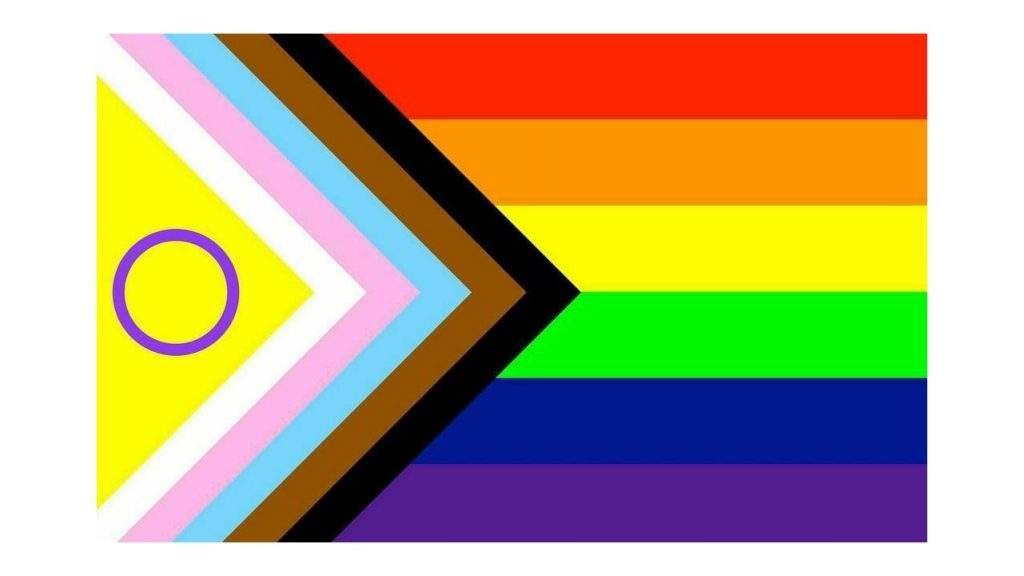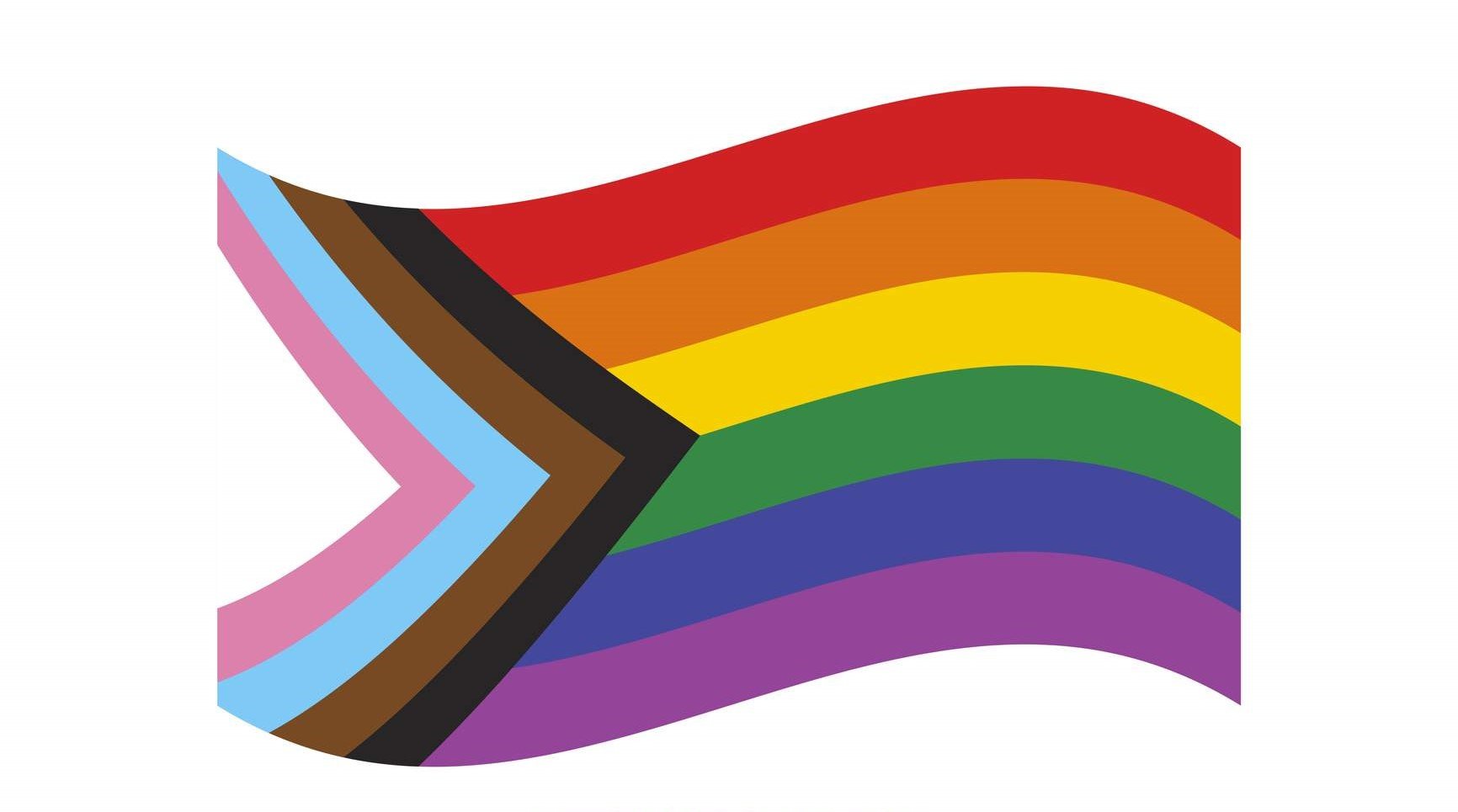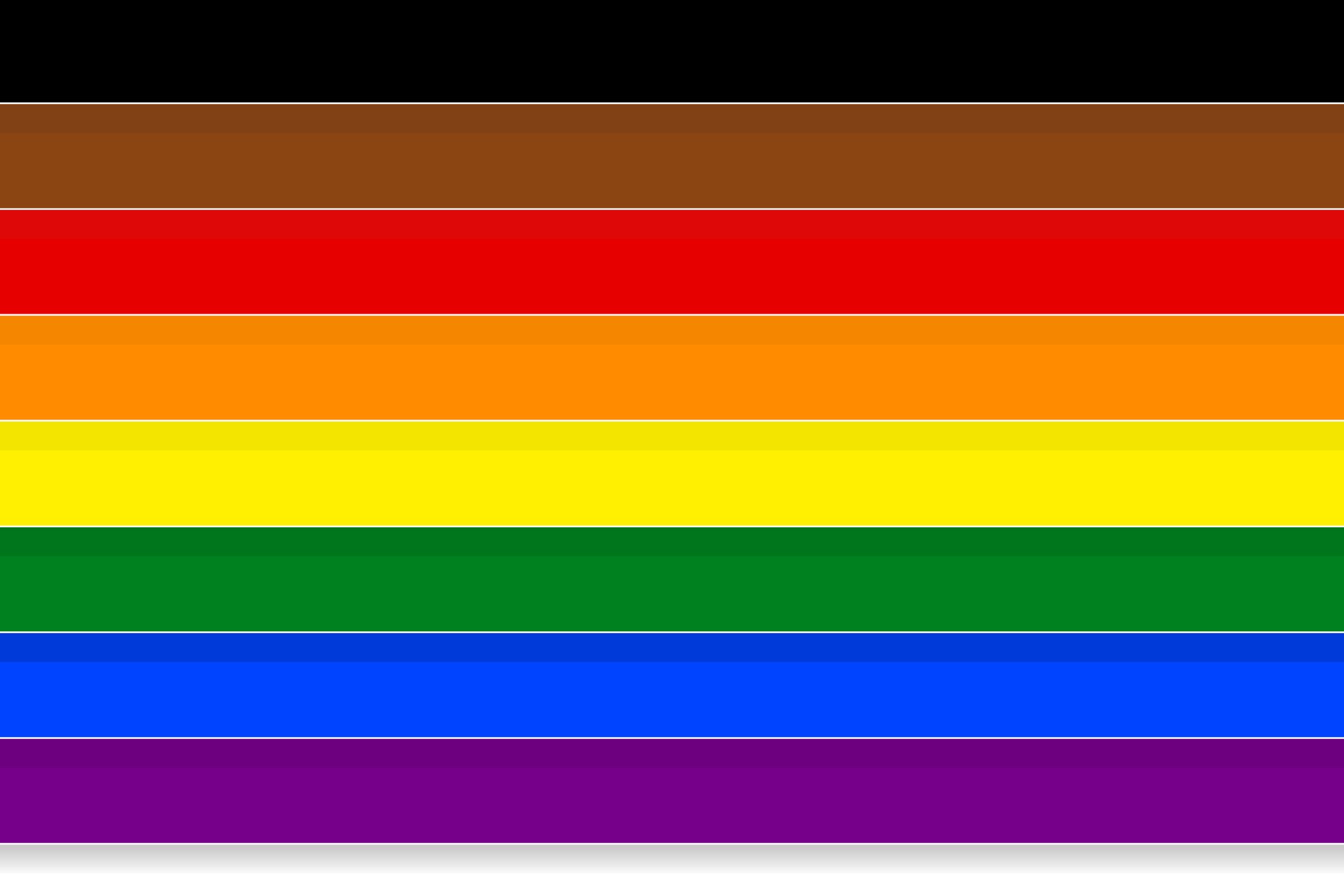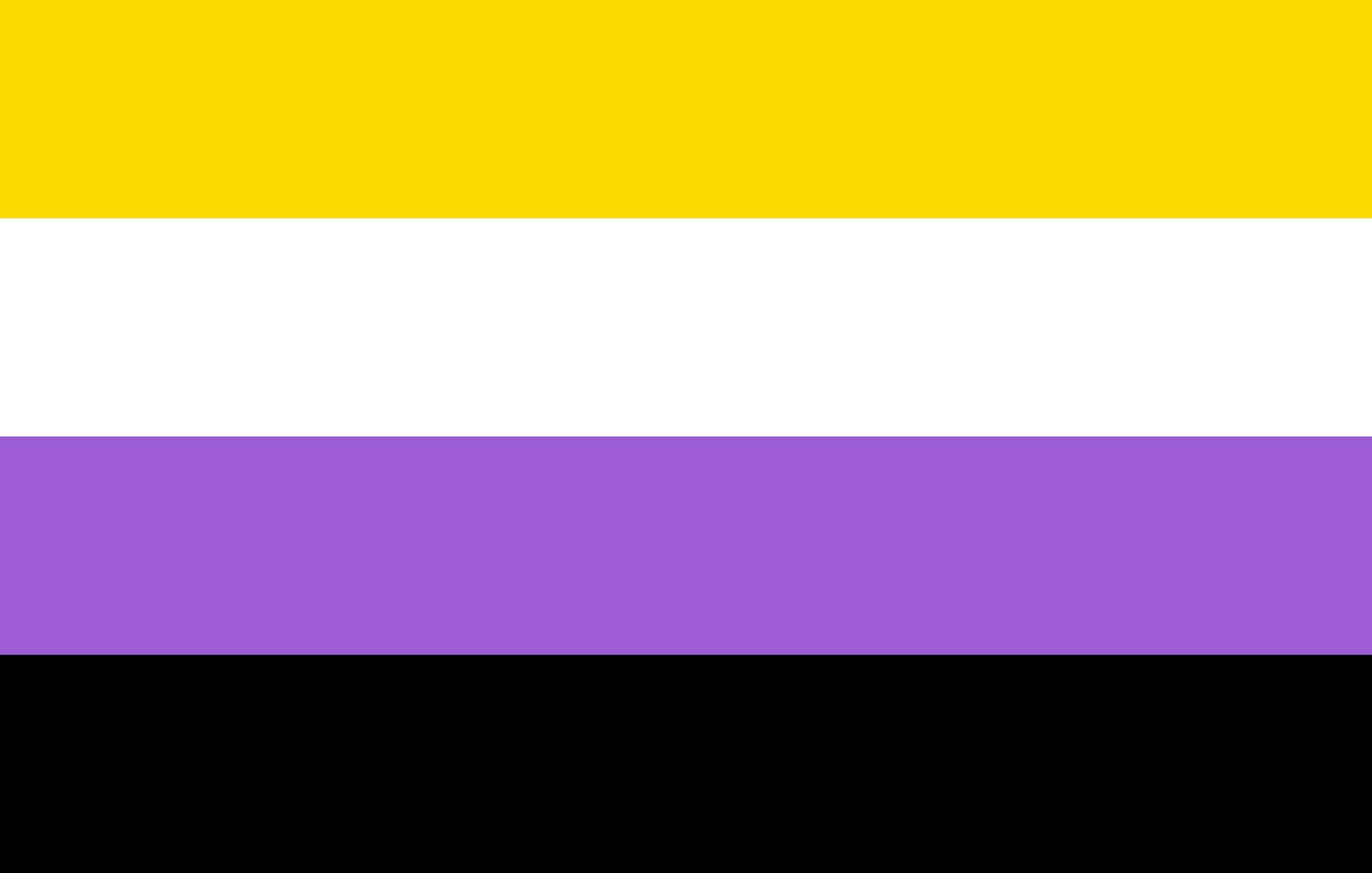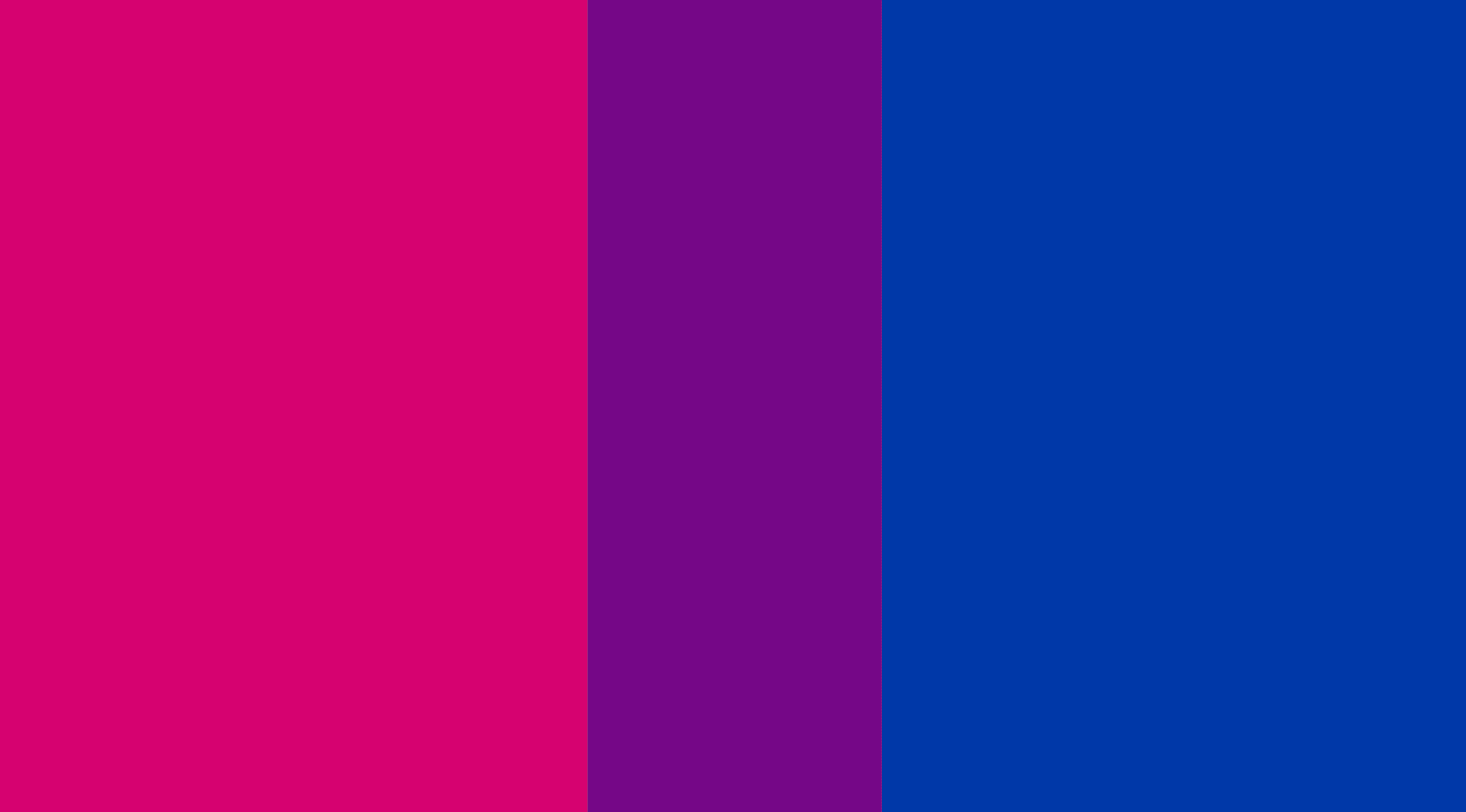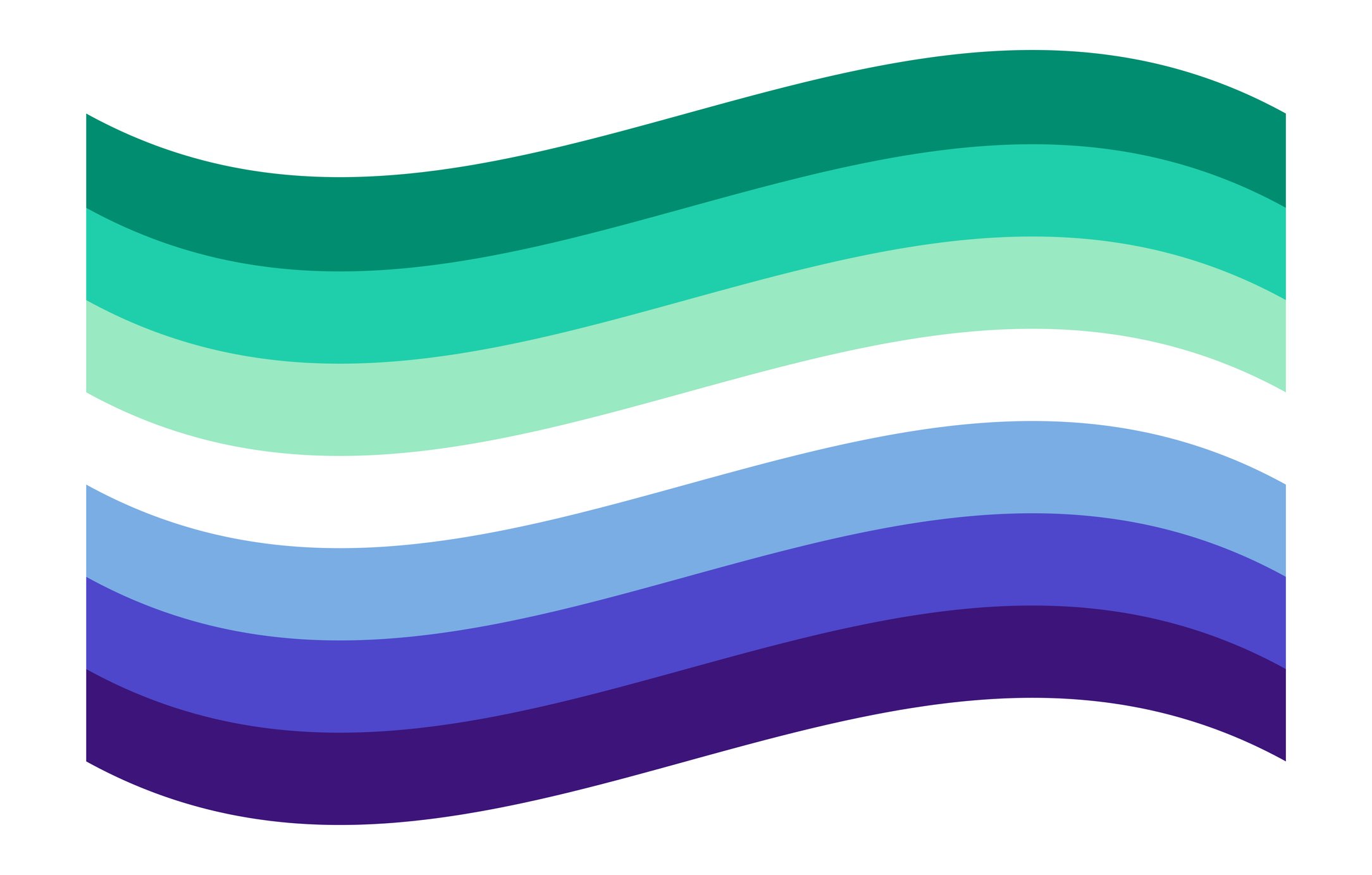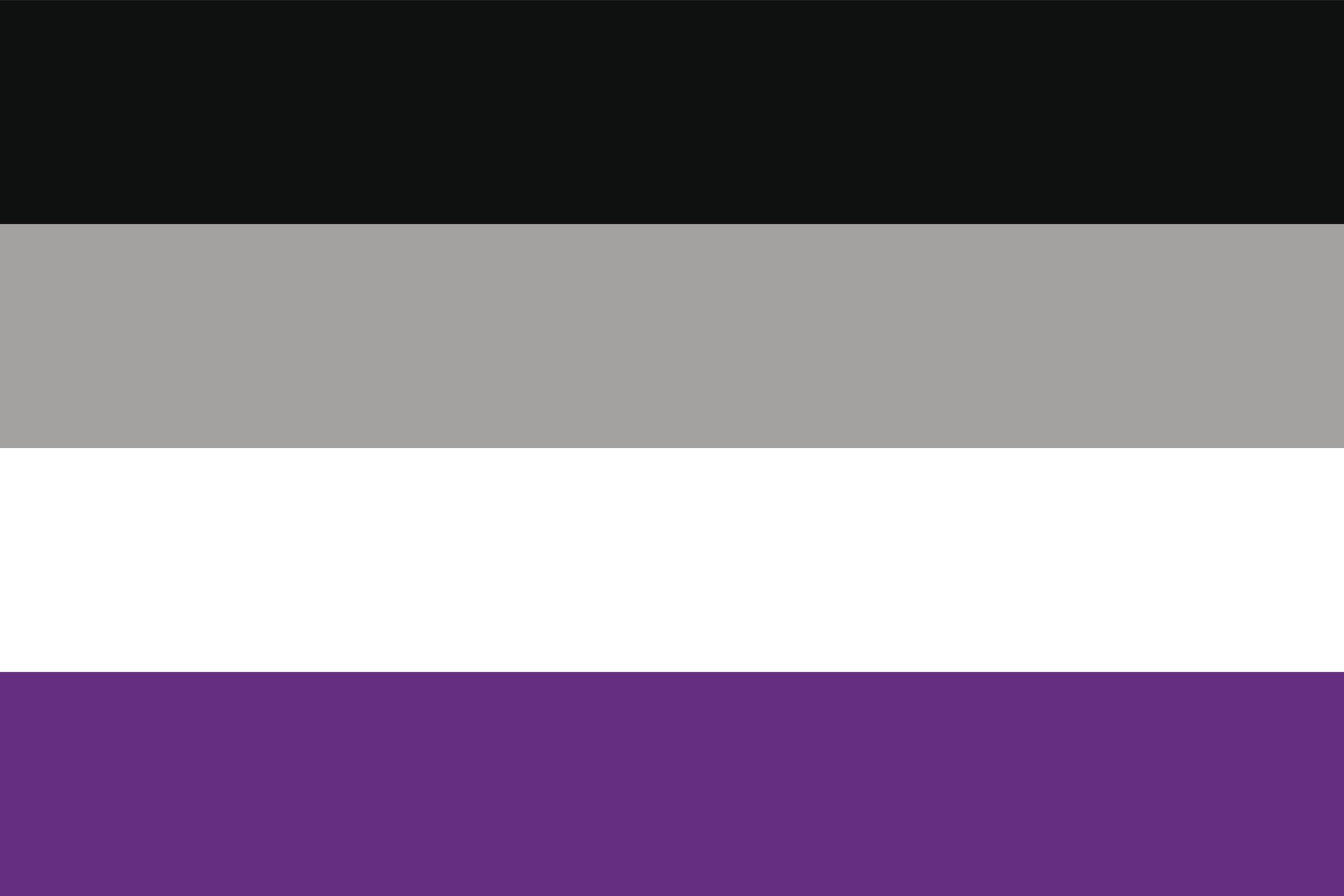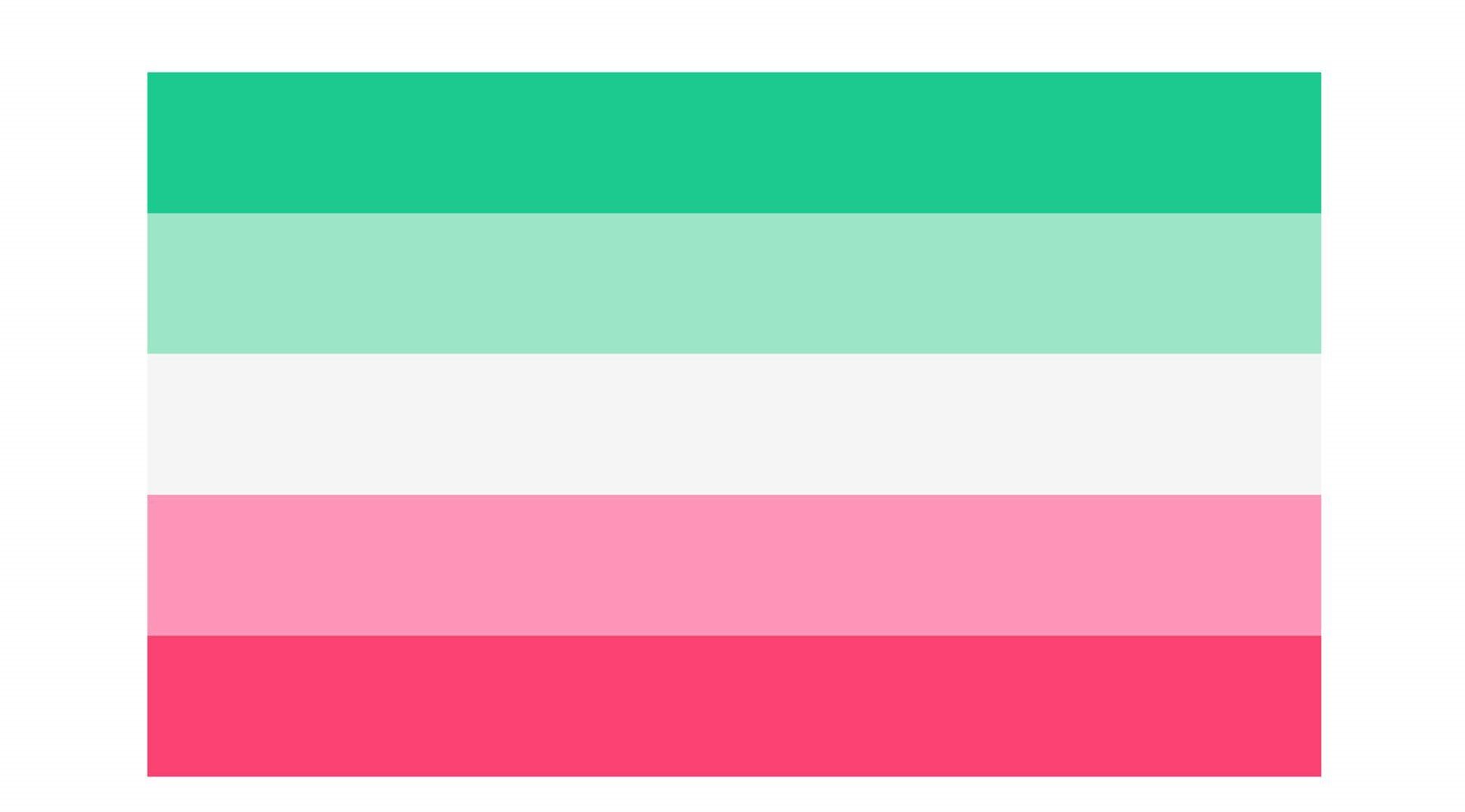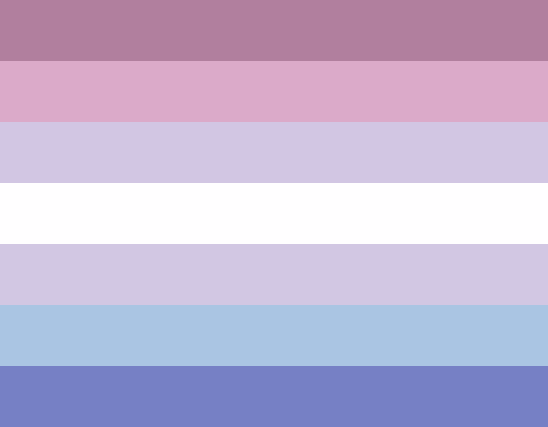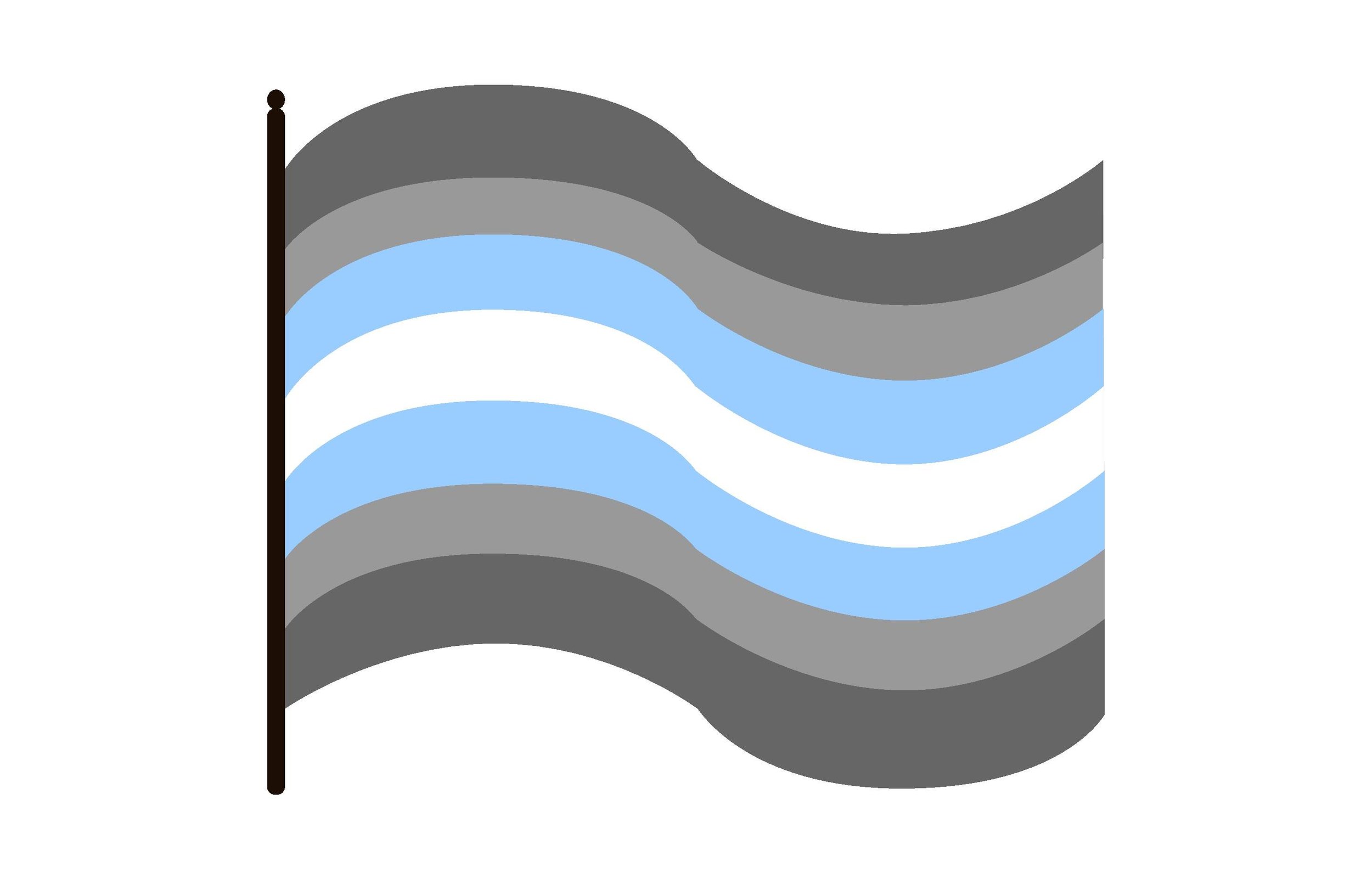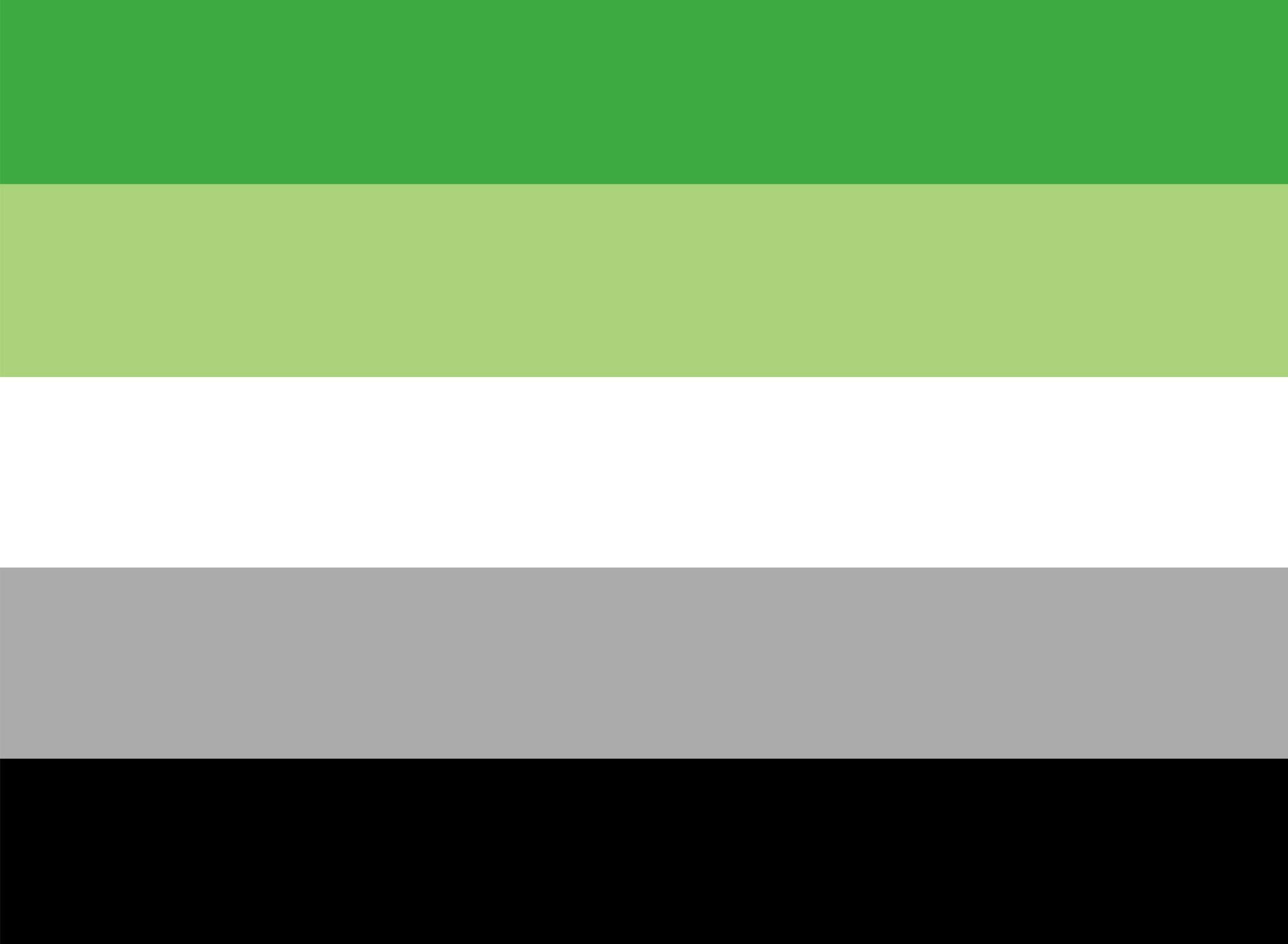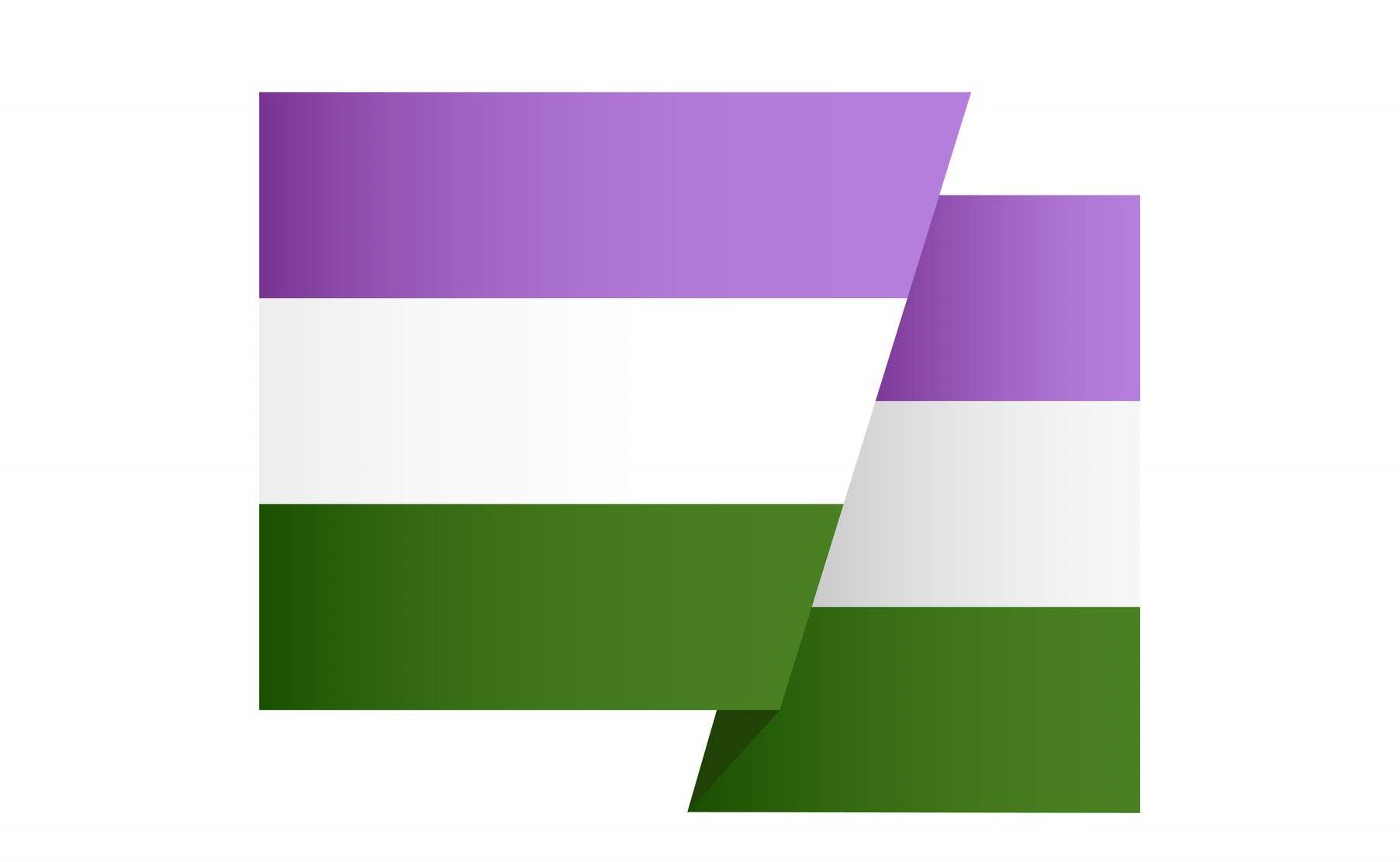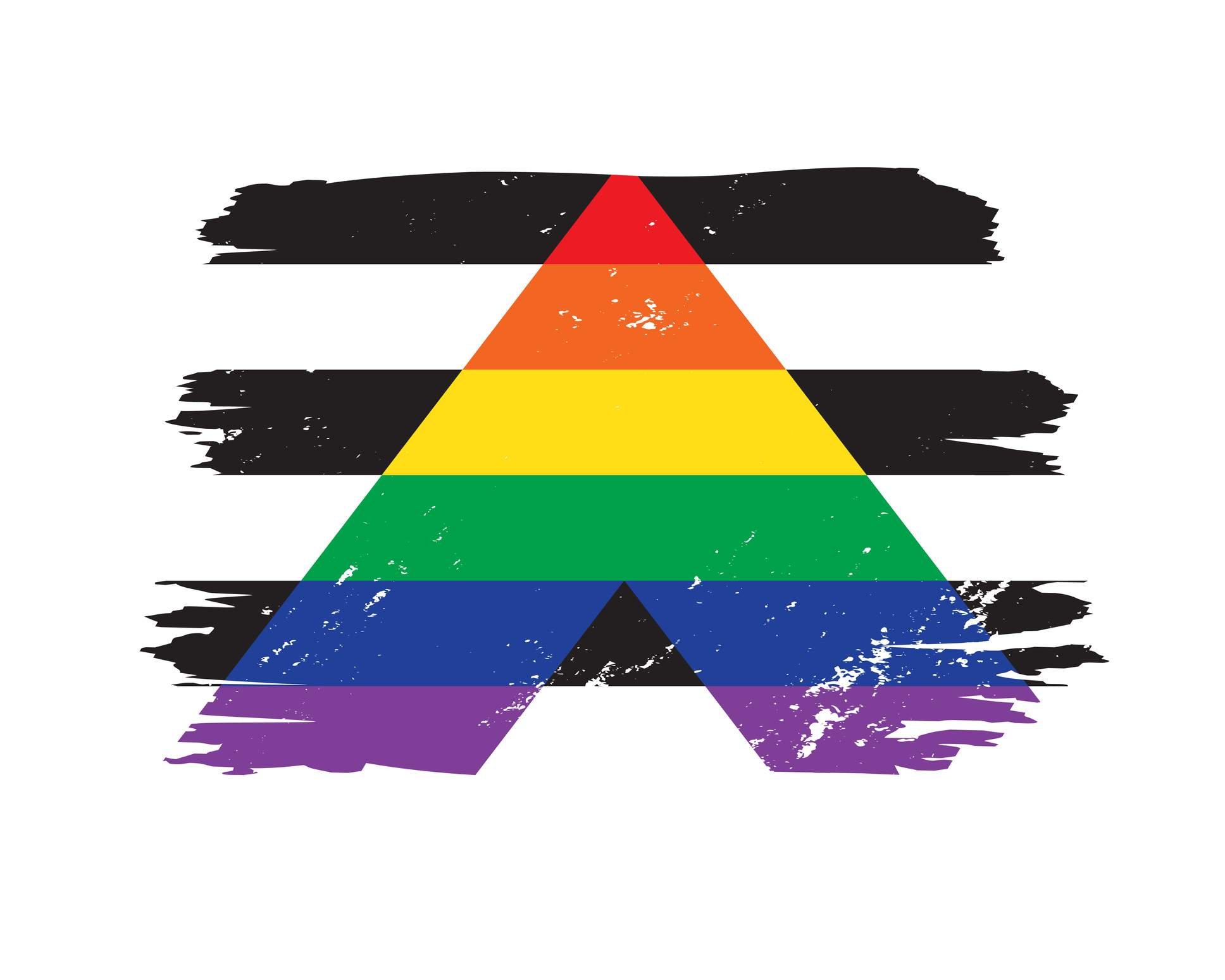The use of colorful pride flags is a longstanding tradition in the LGBTQ+ community. And while many people have likely seen one or more of these flags, not everyone understands the symbolism and the story behind each one.
We want to help you know the flags! Here’s your guide to many different pride flags, their meaning, and the communities they celebrate, starting with some of the most widely used ones.
Table of contents (click on the button you want to jump to a specific section)
Gilbert Pride Flag
You might be familiar with the six-colored rainbow flag that is widely used to represent the LGBTQ+ community. But did you know that this is a relatively new rendition of the original?
The original flag (shown here) was designed by activist, veteran, drag queen, and artist, Gilbert Baker, and made its debut at the San Francisco Gay and Lesbian Freedom Day Parade in 1978. He was inspired by the Rolling Stones song She’s a Rainbow, and the 1960s hippies movement, assigning each color with a specific meaning:
Pink: Sex (later removed)
Red: Life
Orange: Healing
Yellow: Sunlight
Green: Nature
Turquoise: Magic (later removed)
Indigo: Serenity
Violet: Spirit
The evolution to the six-colored flag used today happened out of practicality.
After the parade in 1978, demand for the Pride Flag increased, but the hot pink fabric was difficult to find in large quantities. Then, the Paramount Flag Company started making a version out of the standard rainbow colors to help meet demand, and a seven-color pride flag was the new norm.
A year later, the flag evolved once more…
6-Color Pride Flag
In 1979, Baker was decorating street lamps along a gay pride parade route and wanted to split his now iconic flag colors between lamp posts. He dropped the turquoise stripe to have a flag that could be symmetrically split.
By the ’80s, the Rainbow Flag was being mass-produced in multiple sizes, on clothing, and on accessories. It’s normally flown with the red stripe on top and has been a lasting symbol of acceptance, community, diversity, and love.
A version of the six-colored Pride Flag has been proudly hanging in the MoMA since June 26, 2015, the day the US Supreme Court legalized same-sex marriage.
Progress Pride Flag
The LGBTQ+ Progress Pride flag is an updated version of the traditional rainbow flag. It was designed by Daniel Quasar in 2018, in response to a need for a more inclusive symbol that acknowledges the diversity within the LGBTQ+ community.
The Progress Pride flag features the traditional rainbow stripes but includes movement and a few new colors.
Pink and turquoise re-appear in this flag, but they have a different significance than they did in Baker’s original Pride Flag. The chevron of light blue, pink, and white stripes represents transgender and nonbinary individuals. Meanwhile, the black and brown stripes represent people of color within the LGBTQ+ community.
These new additions are in the shape of an arrow on the left pointing to the right, which represents forward movement and the need for continued progress.
Philadelphia Pride Flag
The Philadelphia Pride Flag is another variation of the traditional pride flag containing elements of the newest Progress Flag. It was designed in 2017 by artist Daniel Quasar.
In addition to the six colors of the rainbow flag, the Philadelphia Pride Flag also features black and brown stripes at the top to represent LGBTQ+ people of color.
Nonbinary Flag
A symbol of the nonbinary community—which includes individuals whose gender identity is not exclusively male or female—the Nonbinary Flag was created in 2014 by nonbinary activist Kye Rowan.
The flag features yellow, white, purple, and black stripes. The yellow stripe represents gender outside of the binary, the white stripe represents those who identify with multiple genders, the purple stripe represents a combination of masculinity and femininity, and the black stripe represents those who identify as agender (those without a gender).
Bisexual Pride Flag
The Bisexual Pride Flag was designed in 1998 by LGBTQ activist Michael Page as a symbol of those in the gay community who are attracted to more than one gender. The flag’s pink stripe represents same-sex attraction, while its blue stripe represents opposite-sex attraction, and its purple stripe represents a combination of both.
Lesbian Flag
Noticing a lack of a universally recognized lesbian pride flag, Emily Gwen designed the Lesbian Pride Flag in 2018. It features seven shades of pink, orange, and red stripes, with a white stripe in the center. The pink and red stripes represent love and attraction to women, the orange stripe represents community, and the white stripe represents intersexuality.
Gay Men’s Pride Flag
As the rainbow pride flag shifted to represent the LGBTQ+ community as a whole, there became a need to create a flag specifically for gay men. The design was proposed by a Tumblr user in 2019, and though it faced controversy at first (with accusations that it was transphobic and copied the lesbian flag), it was eventually accepted by the community.
It features five colors (sometimes seven), ranging from green to white to purple. The green and turquoise colors represent community and healing. White represents gender nonconforming, transgender, and non-binary individuals. And the blue to purple colors represent love, diversity and fortitude.
Leather Pride Flag
The Leather Pride Flag represents the leather subculture and other forms of fetish. Leather activist, Tony DeBlase, designed the flag in 1989 as a symbol of unity and pride for the community.
A black stripe represents dedication to discipline and self-control, while a blue stripe represents the community’s commitment to openness and honesty. Finally, a white stripe symbolizes purity, with a heart in the corner of the flag representing love and connection with others.
Intersex Flag
The Intersex Flag was created by intersex activist Morgan Carpenter in 2013 in response to a lack of visibility and understanding of those who do not conform to the standard gender binary. It was first flown at an Intersex Day event in Australia.
The flag’s circle represents wholeness, while the yellow background represents gender neutrality. The purple represents the diversity of intersex people.
Asexual Flag
The Asexual Pride Flag is a symbol of those who experience little to no sexual attraction. It was designed by asexual activist and artist David Jay in 2010 and features a set of four horizontal stripes in black, gray, white, and purple.
The black stripe represents asexuality, the gray stripe represents ace and demisexual identities, the white stripe represents sexuality, and the purple stripe represents community.
Demisexual Pride Flag
Demisexuals only experience sexual attraction after forming a strong emotional bond with another person. This community's flag was designed in 2010 by a member of the AVEN (Asexual Visibility and Education Network) forum known as Alexander.
This flag is an adaptation of the asexual flag. It aims to provide a visual representation of the demisexual identity and promote awareness of the community.
It features a black triangle on the left, which is a nod to the larger asexual community and is meant to represent a lack of sexual attraction. In contrast, the top white stripe symbolizes allosexuality, or the presence of sexuality. The bottom gray stripe symbolizes the gray-ace or graysexuality people in the community. This is meant to include those that fall somewhere between asexual and sexual, or who might not have a clearly defined sexuality.
Finally, the purple strip in the middle divides the flag and touches all other colors. This is an ode to the purple color used by AVEN and, as in the asexual flag, it is meant to represent community.
Graysexual Pride Flag
Milith Rusignuolo designed the Graysexual Pride Flag in 2013 as a symbol of individuals who identify as asexual but don’t fall into the one of the primary types of asexuality. Typically, a person who identifies as graysexual experiences very little sexual attraction.
Purple signifies someone who experiences no sexual attraction. The fade to white represents a signal experience of sexual attraction before shifting back to asexuality.
Pansexual Flag
The Pansexual Pride Flag was designed by graphic designer and activist Evie Varney in 2010 to represent individuals attracted to people of all genders and gender identities. The pink stripe represents attraction to women, the blue stripe represents attraction to men, and the yellow stripe represents attraction to people of all other genders, including non-binary individuals.
Abrosexual Flag
The Abrosexual Pride Flag, designed by Mod Chad from flags-for-us, is meant to represent those who have fluid sexual orientation and those whose sexual orientation might shift over time.
It features a set of five horizontal stripes in shades of pink, white, and green. It’s unknown why these colors were chosen, but one Tumblr user shared their interpretation, “Green represents a queer attraction, the fade to white is for the in-between stage of attraction shifting, and pink is for the actual shift itself. Also, the colors match that of watermelon, which could be a fun pun on the /fluidity/ of our orientation.”
Polysexual Pride Flag
The Polysexual Pride Flag represents people who identify with a polysexual identity—being attracted to multiple genders but not all genders. The flag was created by a Tumblr user known as "Samlin" in 2012. It features a set of three horizontal stripes in pink, green, and blue. The pink stripe represents attraction to women, the blue stripe represents attraction to men, and the green stripe represents attraction to non-binary or other gender identities.
Drag Feather Pride Flag
The Drag Feather Pride Flag is a symbol of the drag community designed in 1999 by artist Sean Campbell. It features a golden phoenix meant to represent rebirth and the fiery passions that the drag community faced in the early years of the AIDS pandemic.
Transgender Pride Flag
The Transgender Pride Flag was designed by activist Monica Helms in 1999 to represent those whose gender identity differs from the sex they were assigned at birth. The Transgender Flag features a set of five horizontal stripes in light blue, pink, and white. The light blue stripe represents the traditional color for baby boys, the pink stripe represents the traditional color for baby girls, and the white stripe represents non-binary or gender non-conforming individuals.
Bigender Pride Flag
The Bigender Pride Flag is a symbol of the bigender community, which includes individuals who identify as having both masculine and feminine identities. The flag was designed by a member of the bigender community known as "Samuel" in 2011. The Bigender Pride Flag features a set of five horizontal stripes in shades of pink, lavender, white, light blue, and dark blue.
Genderflux Pride Flag
In 2012, Tumblr user "campcounseling" designed the Genderflux Pride Flag to represent individuals who have experienced fluctuations in their gender identity over time. The Genderflux Pride Flag features a set of five horizontal stripes in shades of pink, yellow, green, blue, and purple.
Demiboy Pride Flag
Another Tumblr user, known as "transrants,” created the Demiboy Pride Flag in 2015. This flag represents those who partially identify as male, but also identify outside of the binary gender system. The Demiboy Pride Flag has since been widely adopted by the demiboy community and is used to show pride and solidarity.
Aromantic Pride Flag
The Aromantic Pride Flag represents individuals who experience little to no romantic attraction. It was created by a Tumblr user known as "cameronwhimsy" in 2014. It features five horizontal stripes: green, light green, white, gray, and black.
Green and light green represent the spectrum of aromantic individuals, with green being on the opposite end of the color wheel to red (which is the color traditionally associated with romance). White represents platonic relationships. And black and gray represent those of other sexualities.
Maverique Pride Flag
The Maverique Pride Flag represents those who are free to use any pronouns they like and express themselves in whatever way feels comfortable, regardless of gender.
The flag features a set of three horizontal stripes in yellow, white, and orange. The yellow stripe is a color commonly associated with non-binary individuals, the white stripe represents freedom from gender binary, and the orange stripe represents the inner conviction and uniquity that Maverique persons express. It was designed by Tumblr user "microliths" in 2014.
Genderqueer Pride Flag
The Genderqueer Pride Flag was designed by artist and activist Marilyn Roxie in 2011. It features a set of three horizontal stripes in lavender, white, and dark chartreuse. The lavender stripe represents androgyny and the combination of masculine and feminine traits, the white stripe represents agender identity, and the dark chartreuse stripe represents the unique identities and experiences of genderqueer individuals.
Ally Pride Flag
The Ally Pride Flag represents straight or cis-gendered people who have recognized the discrimination that the LGBTQ+ community faces and stands with them. It unites the two communities with the black and white heterosexual colors as the background and a six-colored rainbow “A”, that stands for “ally”, in the center.
Donate to Help SFGMC’s Pride Efforts
If you enjoyed this look at the many different LGBTQ flags, please take a moment today to help all of our educational and community involvement. Make a 100% tax-deductible donation to the San Francisco Gay Men’s Chorus today to directly support our performances, programs, and our work toward creating an inclusive world for LGBTQ+ individuals.

